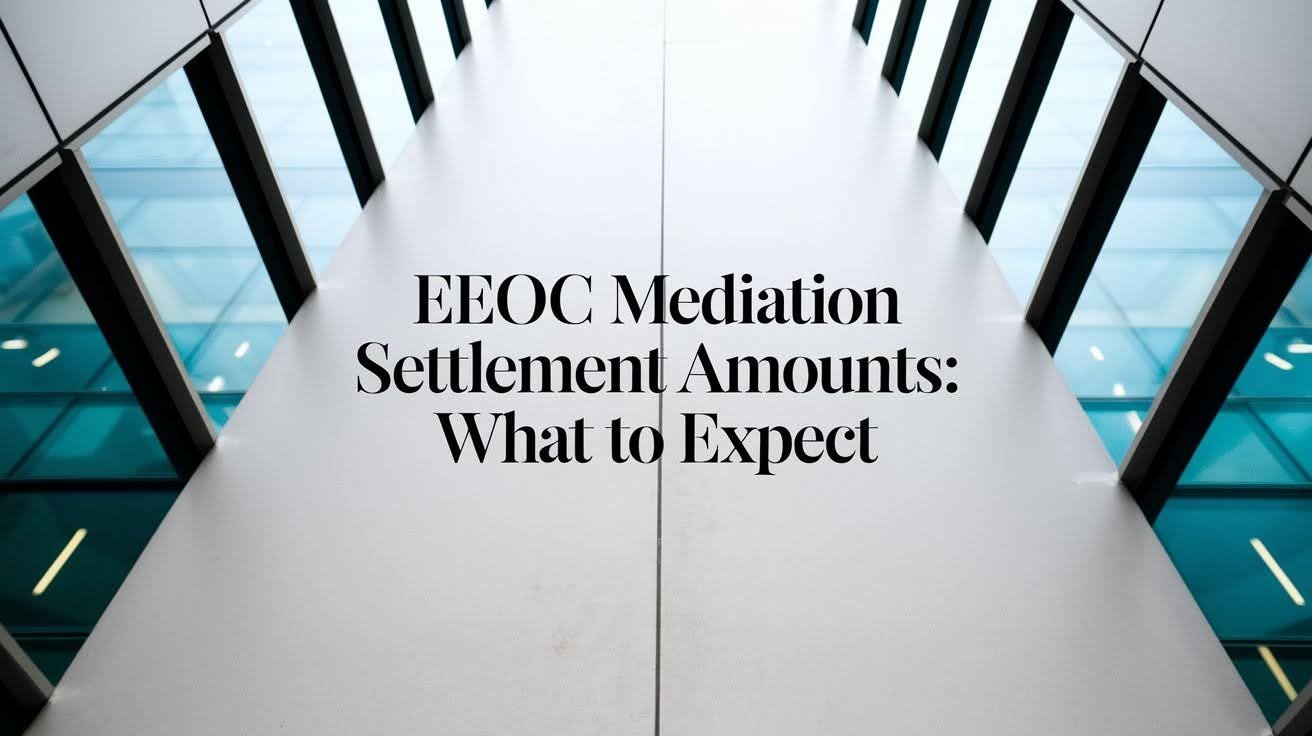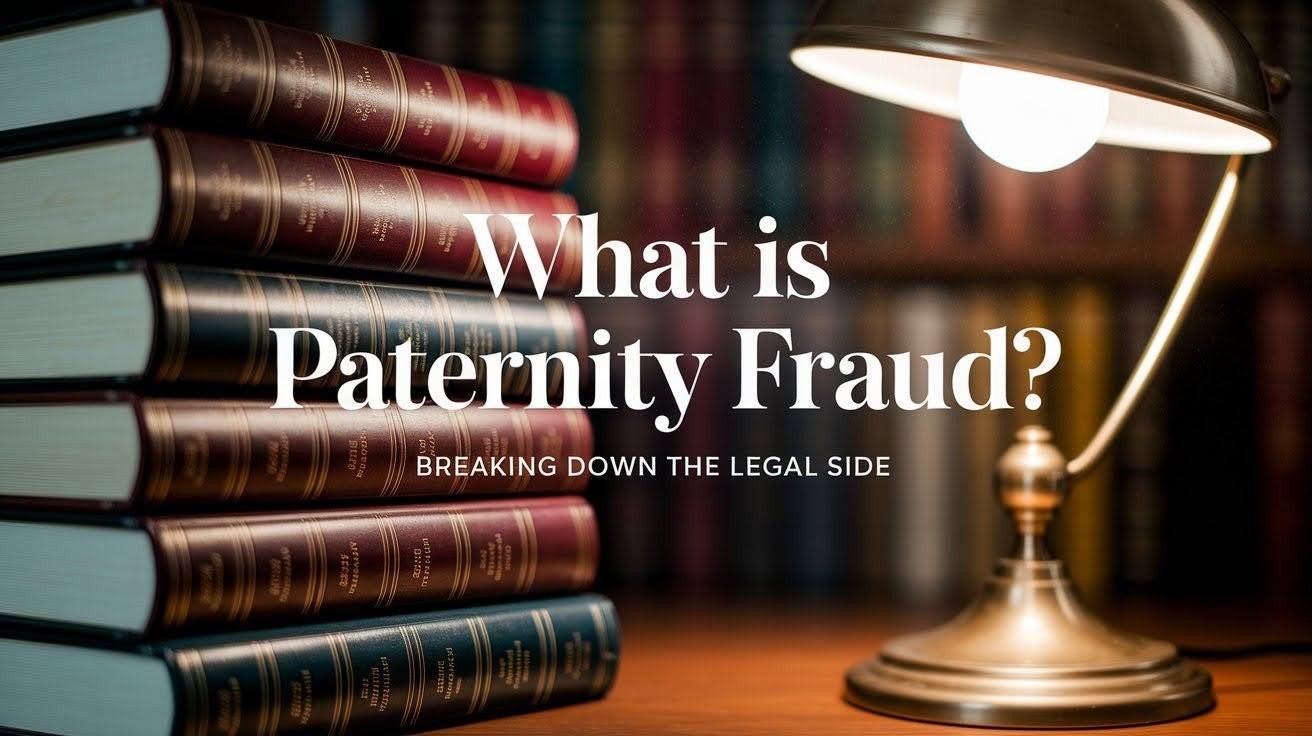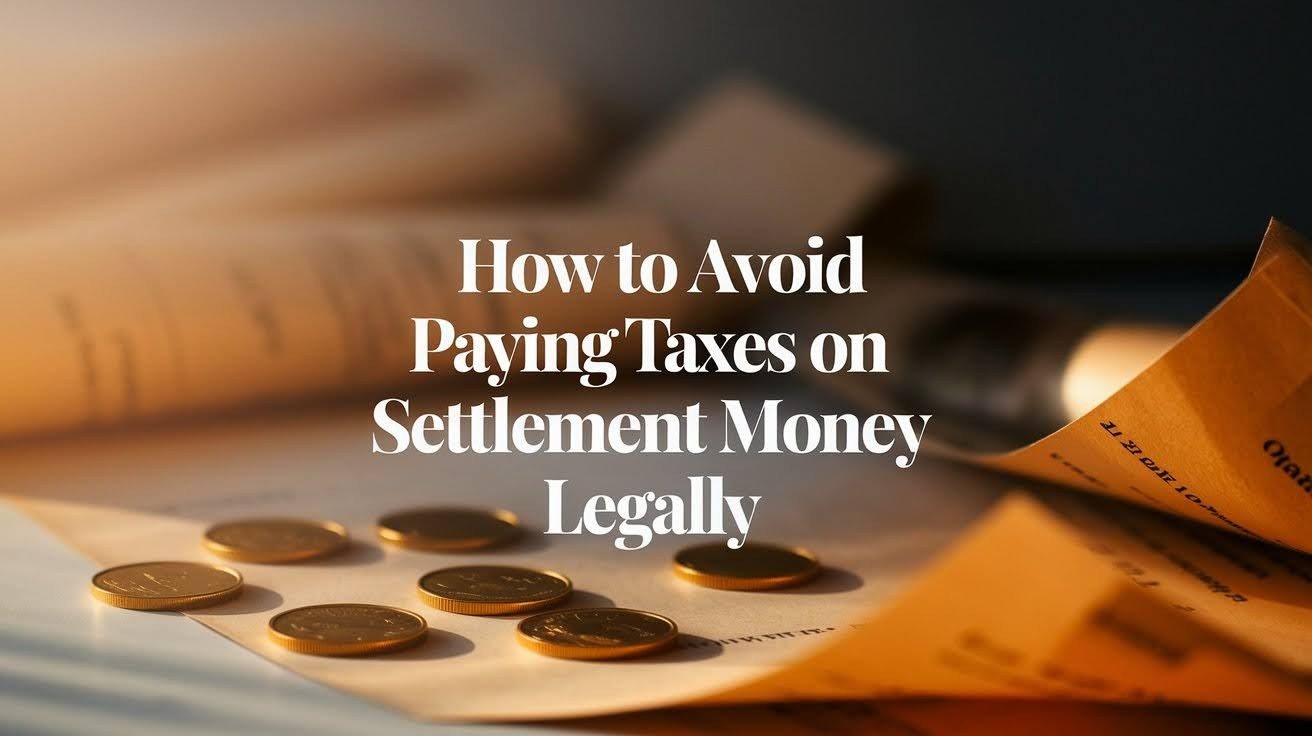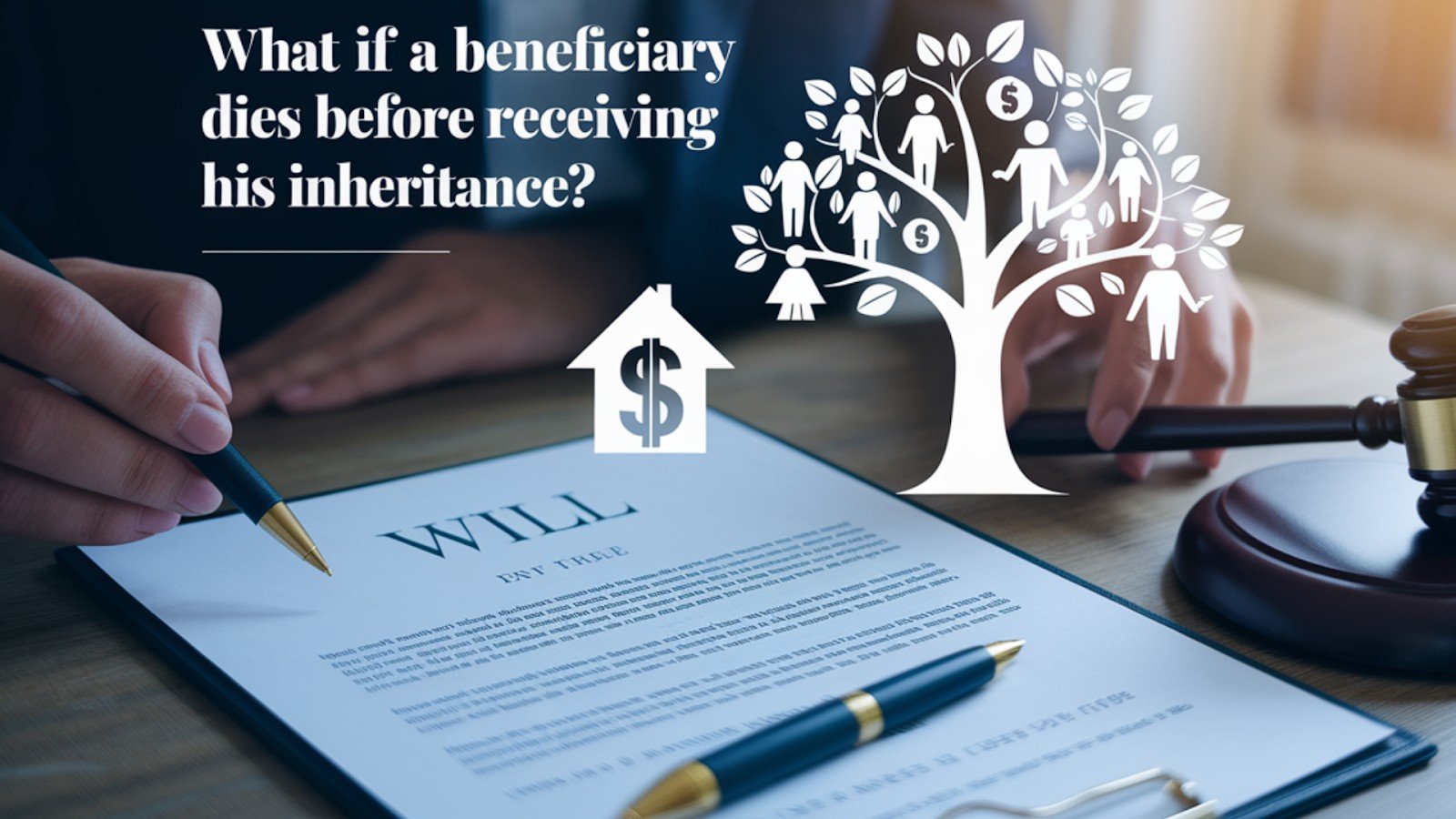Did you know that each year, the EEOC mediation helps to solve over 6,000 workplace discrimination cases? For workers facing unfair workplace treatment, settlements of $156.6 million resulted from these cases during 2023.
A complaint filed with the Equal Employment Opportunity Commission (EEOC) means mediation offers a faster solution for your case than the court system. Understanding EEOC mediation settlement amounts is helped by knowing what to expect from this process.
This guide explains typical monetary receipts for those people. The guide refers to EEOC mediation within. We will cover the factors that affect settlement amounts, and we will cover the typical payment ranges for different types of cases.
What Are EEOC Mediation Settlement Amounts?
EEOC mediation settlement amounts refer to the money and other benefits that workers receive when they resolve discrimination complaints through the EEOC’s mediation program. These settlements help make up for harm caused by workplace discrimination, harassment, or unfair treatment.
Most settlements include money damages like back pay (wages you should have earned), front pay (future lost earnings), and payment for emotional distress. The EEOC reports that the average settlement amount is about $25,000, based on recent data showing $156.6 million distributed across 6,272 resolved cases.
However, not every settlement includes money. Some agreements focus on non-financial fixes like getting your job back, changes to company policies, or required training for managers. These non-money solutions can be just as valuable as cash payments, especially when they prevent future discrimination problems.
Settlement Amount Ranges by Case Type
EEOC mediation settlement amounts vary significantly based on the type of discrimination or harassment involved in your case. Understanding typical ranges for different case types helps you set realistic expectations and prepare for negotiations.
Wrongful Termination Cases
Wrongful termination settlements often range from $15,000 to $75,000, depending on your salary and how long you were unemployed. Higher-paid workers typically receive larger settlements because their financial losses are greater.
The strength of your case matters most in these situations. If you can prove your firing was clearly based on discrimination, employers are more likely to offer higher amounts to avoid costly court battles.
Your job search efforts and any new employment you found also affect the final settlement amount. Courts expect you to look for new work and may reduce awards if you didn’t make reasonable efforts to find another job.
Harassment Claims
Harassment settlements typically range from $10,000 to $50,000, though severe cases can result in much higher amounts. The frequency and severity of harassment incidents directly impact settlement offers.
Cases involving physical harassment or threats usually result in higher payments than verbal harassment alone. When harassment affects your work performance or forces you to quit, employers face greater financial responsibility.
Repeat harassment by the same person or multiple incidents across time strengthens your case significantly. Companies want to avoid public attention that comes with harassment lawsuits, making them more willing to settle quickly.
Discrimination Claims
Discrimination settlement amounts often fall between $20,000 and $60,000, with some cases reaching six figures. Protected class discrimination (race, gender, age, disability) cases vary based on the specific circumstances and impact on your career.
Systemic discrimination affecting multiple employees typically results in larger settlements than individual cases. When companies have patterns of discriminatory behavior, they face greater legal risk and higher settlement pressure.
Individual discrimination cases focus on your specific losses and suffering. Factors like missed promotions, salary differences, and emotional distress all contribute to the final settlement calculation.
Retaliation Cases
Retaliation settlements usually range from $20,000 to $70,000 when employers punish workers for reporting discrimination or participating in investigations. These cases often result in higher amounts because retaliation adds a second violation to the original complaint.
Your settlement increases when you can show clear timing between your protected activity and the punishment you received. For example, getting fired shortly after filing a complaint creates strong evidence of retaliation.
Documentation of the retaliation makes a big difference in these cases. Keep records of any negative treatment, poor reviews, or job changes that happened after you spoke up about discrimination.
Wage and Hour Violations
Wage-related settlements typically range from $5,000 to $40,000, covering unpaid overtime, misclassification, or other pay violations. These amounts depend on how much money you were owed and how long the violations continued.
Multiple employees with the same wage issues often join together in class action cases. These group cases can result in larger total settlements divided among all affected workers.
Simple calculations of hours worked and pay owed make these cases easier to prove. Keep detailed records of your work hours, pay stubs, and any communications about your pay rate.
Hostile Work Environment
Hostile work environment settlements range from $15,000 to $55,000, depending on how severe and frequent the problems were. These cases require proving that the workplace became unbearable due to discrimination or harassment.
The behavior must be serious enough that a reasonable person would find the workplace hostile. One-time incidents rarely qualify unless they involve severe actions like physical assault or serious threats.
Your employer’s response to your complaints matters greatly in these cases. Companies that ignore or dismiss your reports of hostile behavior face higher settlement amounts than those that take action to fix the problems.
Reasonable Accommodation Cases
Reasonable accommodation settlements typically range from $12,000 to $45,000 when employers fail to provide necessary workplace adjustments for disabilities or religious beliefs. These amounts depend on the type of accommodation needed and the impact of the denial.
Medical documentation strengthens your case by showing your legitimate need for specific accommodations. Employers must engage in good-faith discussions about possible solutions before denying requests.
Costs of the accommodation also matter in negotiations. Simple, low-cost fixes that employers refused to provide often result in higher settlements because courts view these denials as clearly unreasonable.
Key Factors That Influence Settlement Amounts
Several important factors determine how much money you might receive through EEOC mediation settlement amounts. Understanding these elements helps you build a stronger case and set realistic expectations.
- Clear records of discriminatory incidents
- Written proof of policy violations
- Performance reviews and personnel files
- Email chains and witness statements
- Race and gender cases often see higher awards
- Age discrimination settlements vary widely
- Disability cases may include accommodation costs
- Harassment claims depend on severity and duration
- Lost wages and benefits calculation
- Career advancement opportunities missed
- Job search expenses and relocation costs
- Medical bills related to emotional distress
- Large corporations typically pay more
- Small businesses may offer limited amounts
- Government agencies have specific payment caps
- Union involvement can affect negotiations
The strength of your evidence plays the biggest role in settlement amounts. Companies are more likely to offer fair payments when faced with solid proof of wrongdoing. Your age, job level, and length of employment also matter since these factors affect your total financial losses.
Tips for Maximizing Your EEOC Mediation Settlement
Getting the best possible outcome from EEOC mediation settlement amounts requires careful preparation and smart strategy. The more organized and thorough you are, the better your chances of receiving fair compensation.
- Keep detailed records of all incidents.
- Save emails, texts, and written communications.
- Note dates, times, and witnesses present
- Track missed work and medical expenses
- Add up lost wages and benefits
- Include job search costs and training expenses
- Consider future earning potential impacts
- Account for emotional distress and medical bills
- Consider hiring an employment attorney
- Understand when legal help becomes necessary
- Know how attorney fees affect your settlement
- Get advice on negotiation strategies
- Organize all evidence in chronological order
- Prepare a clear timeline of events
- Practice explaining your case simply
- Set realistic settlement goals beforehand
Strong documentation gives you leverage during negotiations. Companies take cases more seriously when faced with clear evidence of wrongdoing. Having an attorney can also increase settlement amounts, as employers know experienced lawyers understand the full value of discrimination claims.
Conclusion
Understanding EEOC mediation settlement amounts lets people decide knowledgeably regarding workplace discrimination claims. At the average settlement of $25,000, a helpful baseline exists, but your specific situation will determine the amount you actually receive.
Good mediation needs solid evidence and explicit documentation. Realistic expectations are also key. The company’s size and your financial losses, together with the type of discrimination, play an important role in settlement negotiations.
EEOC mediation offers a voluntary way for private workplace disputes to be resolved. Usual suits take much longer than cases settling within 60-90 days typically.
If you face workplace discrimination, consider consulting with an employment attorney because they can help you understand all of your rights and available options. Professionals are able to guide you so as to greatly affect the mediation process, along with your final settlement amount.
Frequently Asked Questions
How Long Does It Take to Receive an EEOC Settlement?
Most EEOC mediation settlements are paid within 30-90 days after signing the agreement, though complex cases may take longer depending on the company’s payment procedures.
Can I Negotiate a Settlement Without a Lawyer?
Yes, you can represent yourself in EEOC mediation, but having an attorney often leads to higher settlement amounts and better protection of your rights.
What Happens If I Reject a Settlement Offer?
If you reject an offer, your case returns to the EEOC investigation process, which may lead to a lawsuit or administrative hearing later.
Are EEOC Settlements Taxable?
Settlement amounts for back pay are taxable as regular income, while payments for emotional distress may have different tax treatment requiring professional advice.
Can Settlement Amounts Be Made Public?
Most EEOC settlements include confidentiality agreements that prevent public sharing of specific settlement amounts, though general statistics may be reported.










